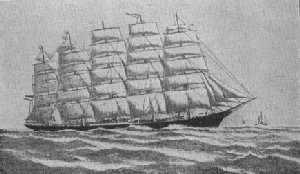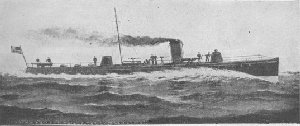|
Steamship records, both for speed and size, have been broken of recent years.
For certain kinds of trade it has been found that sailing vessels of great size are very profitable. As a result, two great six-masted schooners and one seven-masted schooner have been lately built. In carrying lumber and the like these vessels have made a handsome return on the investment. It is a noticeable as well as important fact that they are built of steel. In fact, it is only by the substitution of steel for wood that seven-masters are possible. Speed as well as size has received the attention of the shipbuilder. In England, one of the interesting departures from ordinary methods is the use of steam turbine in the King Edward VII., which was the first passenger steamer thus equipped. This departure seems destined to revolutionize marine transportation. As far back as 1894, the turbine showed great success in the two torpedo boats, Viper and Cobra. The former reached a speed of thirty-seven knots an hour. The King Edward VII. has made an average speed of over twenty knots. The weight of her machinery is sixty-six tons, which is about half as much as is required to develop equal horse-power in the paddle-wheel steamer. There is almost an entire absence of throbbing and pounding.
LARGEST VESSEL EVER BUILT IN AMERICA.
In this vessel, the Eastern Shipbuilding Company, of New London, Connecticut, has embodied all the features of the great White Star liner, "Celtic." The Minnesota is of imposing appearance and is thus described : Length, 630 feet; depth, 56 feet; breadth, 76 feet 6 inches; displacement, 37,000 tons. Her engines are of 10,000 horse-power, supplied by steam from sixteen Niclausse water-tube boilers, which will drive the ship at a speed of fourteen knots per hour. While the Minnesota is designed primarily for freight, she will carry 172 first cabin passengers, 110 second cabin, 68 third cabin and 2,424 steerage passengers or troops, in addition to a crew of 250. The speed is fourteen knots and it is expected to average twelve knots with the heaviest cargoes and in the worst weather. In completeness of electric service, of cold storage and refrigerator plant, of laundry service, ventilation plant and lifesaving appliances, the Minnesota is the most modern and up-to-date vessel yet launched. The dining saloons, the cabin, library and women's boudoirs, the state-rooms and toilet rooms are models of the latest discoveries in their respective lines. The "Minnesota" originated with J. J. Hill. EGG CANDLING BY MACHINERY |


